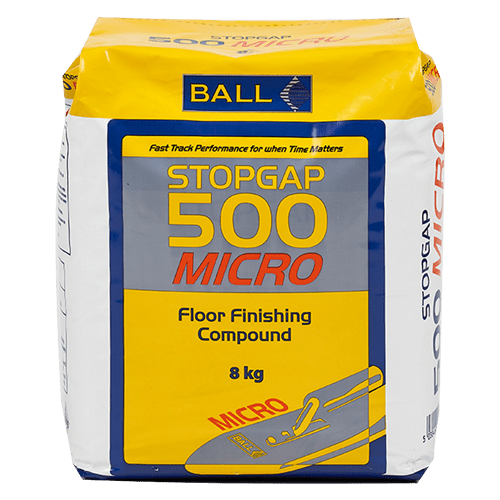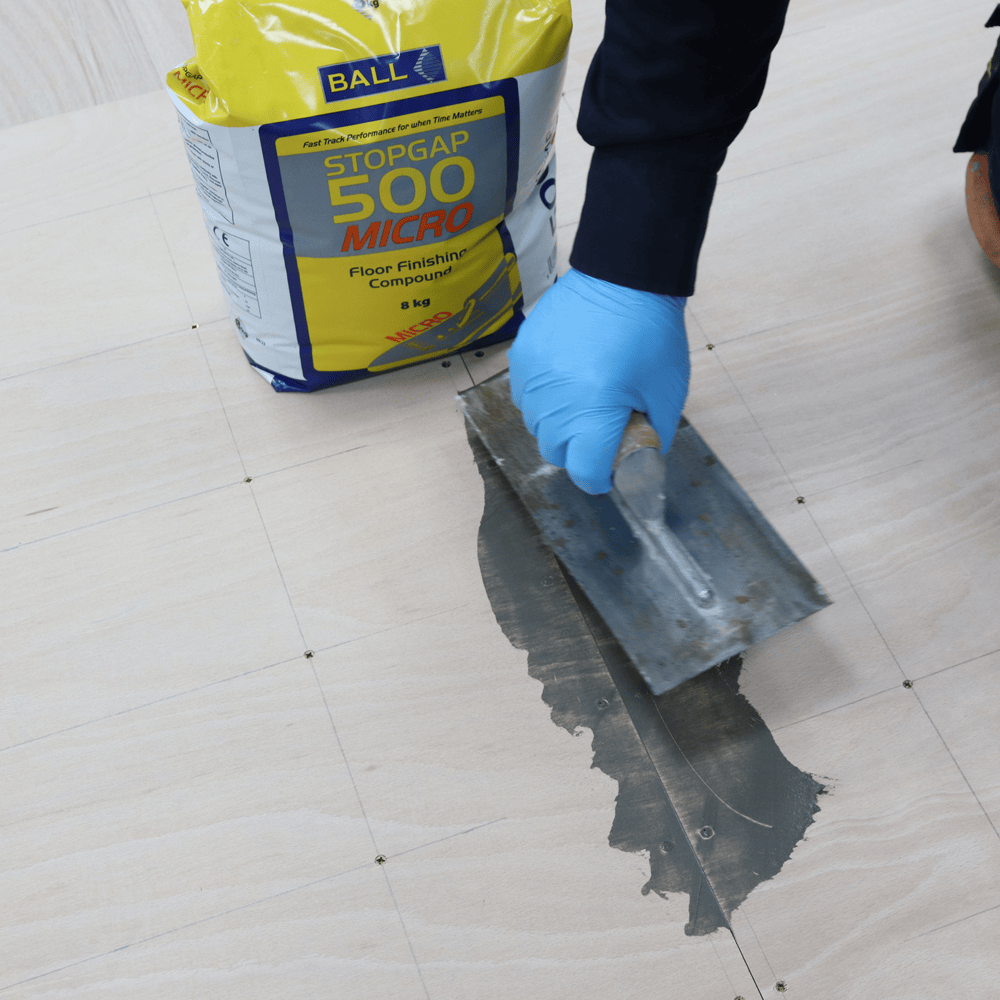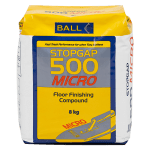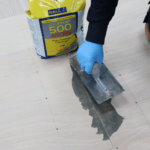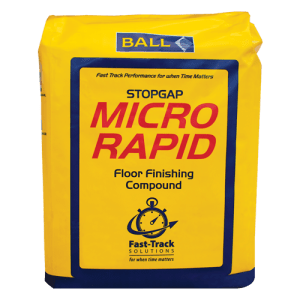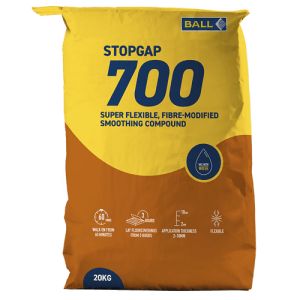Repair and Finishing Compounds
Stopgap 500
Floor Finishing Compound
STOPGAP 500 is a rapid setting, rapid drying floor finishing compound, designed to provide a feather finish and smooth surface to a range of rigid, dry absorbent subfloors. Ideal for light to medium traffic areas, our high-quality floor finishing compound is ideal for preparing a wide range of subfloors including plywood, existing floor smoothing compounds, and sand, cement or calcium sulphate screeds prior to the installation of floorcoverings.
Formulated to maintain superior dimensional stability and long-lasting performance, STOPGAP 500 comes as a pre-blended dry powder. Users can apply it using a trowel as a micro-coat, forming a feathered edge that provides an ideal flooring finish. Applying as a micro-coat allows a quick walk on hard time of 25 minutes. It also allows application of floor smoothing compounds from 25 minutes.
Its low odour and protein-free formulation makes it suitable for use in biologically sensitive areas, such as hospitals. For best results, subfloors of plywood or hardboard construction must be securely screw-fixed in accordance with local standards.
Trusted by flooring professionals, STOPGAP 500 provides a rapid and reliable floor finish suitable with a variety of subfloor types. Read about how flooring contractors utilised STOPGAP 500’s smoothing properties in our case study here.
-

Mix with Water
-

Rapid Setting - Rapid Drying
- Rapid drying
- Protein free
- Suitable over plywood joints
- Suitable for light to medium traffic areas
- Trowel applied
- Can be used to form a feathered edge
- Low odour
Coverage:
50m² at a thickness of Microcoat | 8m² at a thickness of 1mm
-

ISO 9001
-

ISO 14001
-

ISO 45001
-

CE Marking
-

UKCA
-

EC1 PLUS
STOPGAP 500 is a rapid setting, rapid drying floor finishing compound, designed to provide a feather finish and smooth surface to a range of rigid, dry absorbent subfloors. Ideal for light to medium traffic areas, our high-quality floor finishing compound is ideal for preparing a wide range of subfloors including plywood, existing floor smoothing compounds, and sand, cement or calcium sulphate screeds prior to the installation of floorcoverings.
Formulated to maintain superior dimensional stability and long-lasting performance, STOPGAP 500 comes as a pre-blended dry powder. Users can apply it using a trowel as a micro-coat, forming a feathered edge that provides an ideal flooring finish. Applying as a micro-coat allows a quick walk on hard time of 25 minutes. It also allows application of floor smoothing compounds from 25 minutes.
Its low odour and protein-free formulation makes it suitable for use in biologically sensitive areas, such as hospitals. For best results, subfloors of plywood or hardboard construction must be securely screw-fixed in accordance with local standards.
Trusted by flooring professionals, STOPGAP 500 provides a rapid and reliable floor finish suitable with a variety of subfloor types. Read about how flooring contractors utilised STOPGAP 500’s smoothing properties in our case study here.
-

Mix with Water
-

Rapid Setting - Rapid Drying
- Rapid drying
- Protein free
- Suitable over plywood joints
- Suitable for light to medium traffic areas
- Trowel applied
- Can be used to form a feathered edge
- Low odour
Coverage:
50m² at a thickness of Microcoat | 8m² at a thickness of 1mm
-

ISO 9001
-

ISO 14001
-

ISO 45001
-

CE Marking
-

UKCA
-

EC1 PLUS
Stopgap 500 Overview Data sheets and Downloads
Videos
How to mix and apply Stopgap 500 Micro - Floor Finishing Compound
Stopgap 500 is a rapid drying floor finishing compound delivering a feather finish and smooth surface prior to your floorcovering installation. Suitable for light to medium traffic areas. Water mix, it requires no priming and can be trowel applied to form a feathered edge finish. Stopgap 500 will provide a uniform surface, free from imperfections. Dries to allow the installation of floorcovering after 25 minutes, at a thickness of less than 1mm. Packed in a re-sealable bucket allowing the product to be stored until required.

Need help?
Should you require further information or advice regarding any F. Ball products, please contact the F. Ball technical service team on +44(0)1538 361633 or by e-mail: technical@f-ball.co.uk For the latest information on adhesive recommendations, please refer to the F. Ball Recommended Adhesives Guide
